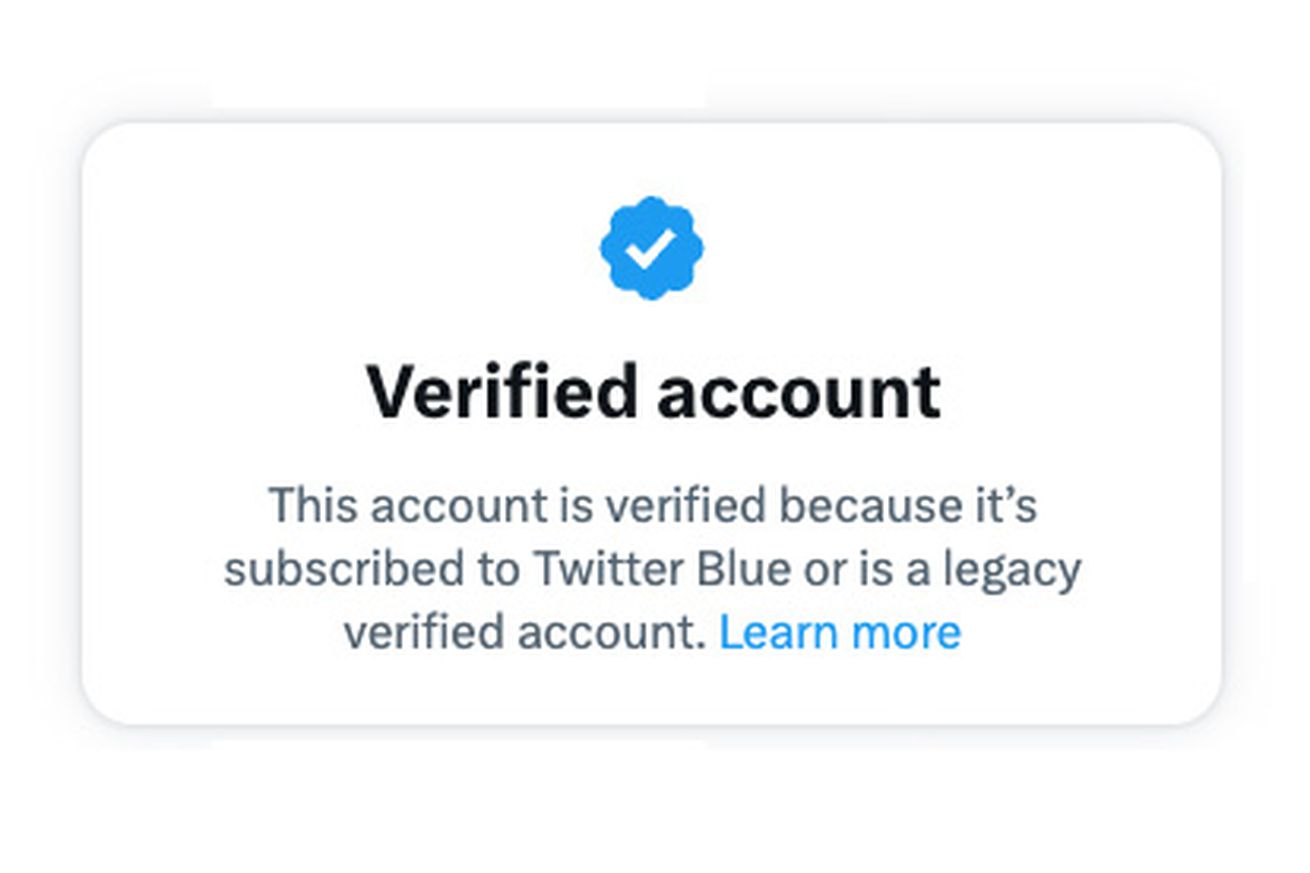
April 1st was the day Twitter said it would begin winding down its legacy verified program. But like most things done at the company under Elon Musk’s leadership, the process appeared to be chaotically executed, and subject to the whims of its new CEO.
For starters, with the exception of one major corporate account, legacy verified checkmarks don’t appear to have actually started disappearing for any of the accounts we viewed. What has changed is that Twitter has stopped officially distinguishing between legacy verified users and accounts that pay for Twitter Blue. Click on the verified blue badge for Verge Editor-in-chief Nilay Patel, for example, and you’ll now see a message that reads “This account is verified because it’s subscribed to Twitter Blue or is a legacy verified account.”
In a since-deleted tweet captured by Matt Binder, Musk said that legacy verified accounts would be given “a few weeks grace” before seeing their checkmarks removed. But a report from The Washington Post suggests there may be technical challenges to removing so-called blue ticks quickly at scale:
Removal of verification badges is a largely manual process powered by a system prone to breaking, which draws on a large internal database — similar to an Excel spreadsheet — in which verification data is stored, according to the former employees. Sometimes, an employee would try to remove a badge but the change wouldn’t take, one of the former employees said, prompting workers to explore workarounds. In the past, there was no way to reliably remove badges at a bulk scale — prompting workers tackling spam, for example, to have to remove check marks one-by-one.
“It was all held together with duct tape,” the former employee added.
There has been at least one high profile example of a previously verified account losing its legacy verified badge, however, and that’s the New York Times. The organization has said it doesn’t plan to pay Twitter the reported $1000 a month to be officially verified on the platform. Upon being told this by a Twitter user, Musk said “we’ll take it off then” and its checkmark disappeared. But other NYT accounts, including Books and Opinion, still display their legacy checkmarks, as do other publications like the LA Times and The Washington Post despite also saying they don’t plan to pay Twitter’s new verification fees.
Oh ok, we’ll take it off then
— Elon Musk (@elonmusk) April 2, 2023
In a follow-up tweet, Musk called the NYT’s stance “hypocritical” because it charges users a subscription to read much of its content.
Twitter isn’t removing checkmarks from every account that’s said it won’t subscribe to Twitter Blue, however. LeBron James, for example, still has his legacy blue verified badge despite the basketball player publicly saying he won’t pay for it.
Although Elon Musk has characterized the changes to Twitter’s verification system as an attempt to treat users equally, last week a report claimed that the company plans to grant free checkmarks to certain companies. These will reportedly include the top 500 advertisers on the platform, and the 10,000 organizations with the most followers.
While Twitter attempts to remove the distinction between legacy verified users and Twitter Blue subscribers, the difference still appears to be visible in the site’s code. Twitter user Isabelle The Jpeg has uploaded a script to GitHub that attempts to expose the difference on the site itself.
ELON TRIED TO HIDE WHO IS SUBSCRIBED TO TWITTER BLUE, BUT I CAN STILL SEE IT WITH THE NERD EMOJI SCRIPT pic.twitter.com/uXRWNzkOom
— Isabelle The Jpeg (@IsabelleDotJpeg) April 2, 2023
Twitter’s move to aggressively push paid verification comes as the company is now reportedly worth less than half what Musk paid for it less than a year ago. A recent memo pegged the value of the social media network at $20 billion, versus the $44 billion Musk acquired it for. Not great considering the amount of debt Musk took on to finance the purchase.

Aucun commentaire:
Enregistrer un commentaire